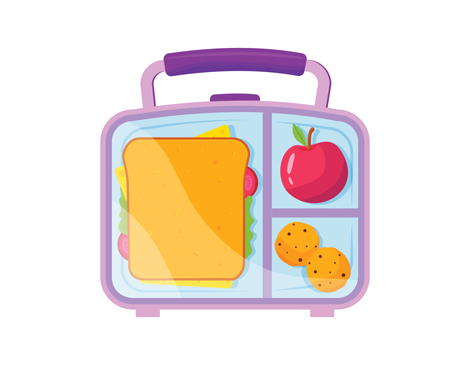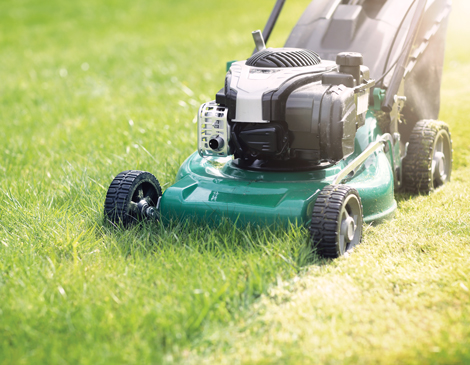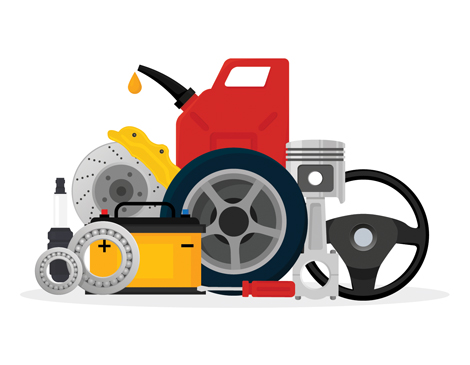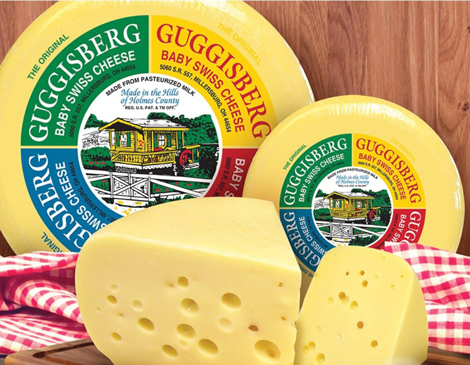My Life: Tips to a Happier and Healthier You
by Lynne Thompson, Terry Troy | Aug. 1, 2023 | 4:00 AM

My Food: Serving Wine with BarbecueYolanda Albergottie observes that most wine lovers revert to serving their favorites with barbecue. And that may not be the best choice.
“When I think of barbecue, what I think of is more like the whole scene of it all: the ribs, the chicken, the burgers, the hotdogs, the potato salad, all the other salads, the watermelon,” Albergottie, the sommelier at Chuck’s Fine Wines in Chagrin Falls, says. “When you put that all together, that’s a lot of different flavors. There are some wines that pair better with that combination than others.”
Her top picks for pouring with anything that might end up on a backyard barbecue plate are:
Chateaumar Cotes du Rhone Rose 2022 ($17.99). “You want a wine that’s able to stand up to the spiciness of a barbecue sauce but still not overpower potato salad,” Albergottie says. “And the one wine that can do that beautifully is rose.” Her favorites are made of organic syrah, grenache and/or mourvedre grapes grown in the Rhone Valley of southern France. “They make roses that are full, yet crisp, with minerality, flavors like strawberry, sometimes watermelon. If you’re looking at a fuller-bodied [rose], you can even get some of the berry notes.”
Santinori Assyrtiko 2021 or 2022 ($30.99). White wines made from assyrtiko grapes grown in the emerging wine region of Greece “are some of the best wines for any type of meal you could imagine,” Albergottie raves. “The acid level is great, so it cuts through the fat of pork. It’s very crisp, mild in flavor [with a] dry finish, very mineral. All of those things make it a great food wine.”
Ridge Three Valleys Zinfandel Blend 2019 ($31.99). As a hostess, Albergottie always chooses a full-bodied red or blend of zinfandel, petit sirah, syrah and/or cabernet sauvignon. This one is “always full, rich, little bit of spicy, little bit of smoke” — characteristics that complement rather than contrast the flavors produced on the grill or in the barbecue pit.

My Earth: Reducing School Lunch Waste
Back to school means back to packing lunches. Carin Miller, an education specialist with the Cuyahoga County Solid Waste District, says, “there’s definitely room for improvement” in reducing the trash they generate. And her tips for doing so can pay for themselves over time.
Ditch the brown bags. Contrary to what many people believe, only clean, dry brown paper bags are recyclable. Miller suggests checking out the wide range of reusable lunch bags. “[There are] lots of fun ones for kids, kind of like the old lunch boxes, with characters from different cartoons, popular shows,” she says. Many are insulated and come with a reusable ice pack. “Pick something durable that’s easy to wipe down or wash,” she advises.
Replace plastic bags/foil/waxed paper. Miller notes that there’s a reusable plastic or steel container for anything anyone might want to carry. Insulated containers keep yogurt, applesauce and cottage cheese cool and soups steaming hot. For those who prefer zipper-type bags, she recommends switching to the silicone ones now on the market. “They are dishwasher safe,” she says. “And you can put anything in there.”
Washable fabric bags lined with plastic and secured with Velcro are another option.
Create single servings from full-size packages. Buying a family-size bag of, say, popcorn and divvying it up into one of the aforementioned containers can eliminate days’ worth of individual bags, along with the box and/or plastic in which they are sold. Miller’s recommendation extends to beverages. Fill insulated bottles rather than buy juice boxes and bottled waters.
Use utensils from the kitchen cutlery drawer. High-quality plastic knives, forks and spoons can be hand-washed and reused. “Eventually, things will break, and you’re going to have to replace them,” Miller says.

My Health: WHO's Recommendation on Non-Sugar Sweeteners
The World Health Organization’s (WHO) recent guidelines advised against the use of all synthetic and naturally occurring or modified non-sugar sweeteners such as acesulfame K (Ace-K), aspartame (Equal or NutraSweet), advantame, cyclamates (Sucaryl), neotame (Newtame), saccharin (Sweet’N Low), sucralose (Splenda), stevia and stevia derivatives. Aspartame has been declared a possible carcinogen.
The recommendation is based on a review of available evidence that suggests the use of these sweeteners does not provide a long-term benefit in reducing body fat — and “that there may be potential undesirable effects from long-term use … such as an increased risk of type 2 diabetes, cardiovascular diseases and mortality in adults.”
The WHO states more research needs to be done. But Dr. Michael Roizen, Cleveland Clinic chief wellness officer emeritus, cites a pair of small Israeli studies, randomized and controlled, in which researchers gave subjects a given sugar substitute to consume, then studied their gut microbiomes, uptake in metabolism and insulin resistance. Both found an increase in insulin resistance.
“When you eat something, your bacteria [in your gut] metabolize it or react to it,” he explains. “You can change not only your genes by what you eat, but you change the gene functioning of the bacteria inside you. And that gene functioning changes the compounds — the proteins those bacteria produce from the food they metabolize. What we know is those proteins inhibit the functioning of insulin in getting glucose into cells in these studies.”
Dr. Roizen adds that the result of this impediment to insulin functioning is more glucose in the blood. High glucose levels increase the chances of developing diabetes and cardiovascular disease.
The WHO’s advisory does not include low-calorie sugars or sugar alcohols. But a recent Cleveland Clinic study showed an association between higher blood levels of erythritol, a compound made by all of the body’s cells as part of energy production as well as a sweetener made by fermenting corn, and an elevated risk of experiencing a major cardiac event such as heart attack, stroke or death.

My Home: Organizing for School Success
Searching for that shoe or book that mysteriously goes missing.Discovering a child can’t find the supplies to complete an art or science project the night before it’s due.
Those aggravations can be reduced with organization, according to Cleveland native Sandi Einstein, whose now-San Diego-based e=mc2 organizing and coaching consultants continues to virtually coach Northeast Ohio clients as well as individuals across the country. She advises taking these steps to ensure calmer school days.
Clean closets and drawers. Now is the perfect time to go through kids’ clothes, determine what still fits and what should be purchased, donated or pitched. Einstein equipped her school-age granddaughter’s closet with shelves where folded shirts are stacked by sleeve length and rolled leggings are grouped by cropped or full-length legs.
Create a dedicated workstation. Einstein notes that a child’s bedroom may not be the best place for it. “Younger kids usually like to be in the kitchen near their parents,” she says. She maintains a cart that can be wheeled to any spot in her home when she’s helping care for her granddaughter. The open shelves are stocked with supplies the child typically needs.
Set up an “action file.” It could be a decorative box, a slotted vertical file that sits on a desk, whatever works best, to keep study guides, homework assignments, current projects, etc. organized and within easy reach. Einstein notes that some children may benefit from printing out digital communications, assignments and study materials. “They have all these portals,” she observes. “And not everything is in the same place. So when they have to look at more than one place, it’s difficult.”
Get a calendar. “[Kids] have a calendar on their phones, but they don’t always look at it,” Einstein says. She likes the large month-by-month calendars that double as a desktop blotter and/or wall-hung erasable calendars. Younger children may need help maintaining it. “It takes some planning, and it takes some doing,” she acknowledges. “But those are the kind of life skills that prepare you for going off on your own.”

My Yard: Is Your Property Fall Ready
One thing that shouldn’t be overlooked this time of year is lawn care. Here are some great back-to-school yard tips from the experts at the Ohio Valley Group in Chagrin Falls.
Not only will they give your property a fall facelift but also provide you with a clean slate for the new school year. It’ll also simplify the maintenance you’ll face in spring. It’s easier to work with your yard in the late summer and fall because the soil is still dry and warm.
The soil’s light texture makes it easier to rejuvenate the earth than it will be when your ground is wet and heavy from a hard winter. The ideal time to start this prep work is about six weeks before the first freeze, which will vary by region, but typically lands around the beginning of the school year.
Check for hanging limbs. These may have been displaced by summer thunderstorms. These limbs should be removed, as they can be dangerous during after school playdates.
The same goes for branches protruding from plants or creeping close to windows and entryways. These out-of-place limbs and branches should be removed for safety and appearance, but also because they can trap moisture and invite termites into your home.
Clear flower beds. When the larger plants are cleaned up, check for debris in your flowerbeds. After a long hot summer, annuals will likely die and could act as a breeding ground for harmful insects that may spread disease in the spring. And while perennials should last from season to season, their stems need to be cut within an inch or two of the ground for prosperous growth in the coming year. To protect the remaining plant, you can mulch your flowerbeds to act as a barrier.
Mulch will also protect flower bulbs, which are another great way to plan for a fresh and colorful spring. It’s best to plant bulbs in the fall before the ground freezes, so they can settle in and prepare to bloom at the first signs of warmer weather.
Close crop your lawn. While it might be painful to cut your beautiful green grass any shorter than necessary as the summer closes, your lawn should be mowed with the blade on its lowest setting (usually one inch). This helps more of the individual blades’ surface area to absorb the sun’s rays and store more food in the roots, keeping them healthy and prepped for spring.
While sunlight will help produce food to get your grass through the winter, there are additional nutrients that can be added to maximize the pH and nutrient levels during the colder months. The Ohio Valley Group team can recommend the fertilizer best for your climate, which will encourage blade development straight from the root when it starts to grow again.
Add leaves. Another way to enrich the soil during its winter rest is by adding a layer of leaves to the surface once the trees in your yard are bare. A two to four-inch layer of shredded leaves acts as a natural compost and protective barrier to fend off snow and frost and keep weeds at bay.
Early fall is also the best time to get rid of those weeds and take steps to stop them from growing back in the spring. Spreading weed preventer or pre-emergent herbicide while the ground is still warm and moist will allow it to penetrate the soil’s surface to minimize the number of unwanted weeds that pop up in
the spring.
Like weeds, vines can be unwanted and overwhelming when they’re not kept under control. Vines are known to trap moisture against the house, causing the mortar between bricks to break down. They also act as a bridge for unwanted insect visitors to get quick access to your windows and doors, and eventually inside your house.
As the seasons change, so will your preferences. Once your yard is refreshed and ready for the school year, the Ohio Valley Group can help you adjust the color scheme on your property to match the cooler temps and vibrant colors that come along with a brand-new start.

My Ride: Getting Ready for the Road
Between hitting Northeast Ohio’s famous potholes and dealing with construction on I-480 this summer, your vehicle deserves a good checkup. Here are some tips from Greater Cleveland Automobile Dealers Association (GCADA) to help with getting your ride ready for fall.
Tip #1: Check the oil. Double check the date of your last oil change. If it was a while ago, even if you haven’t hit the mileage threshold, taking a look at the dipstick is a good idea. Intense weather conditions of any kind (wet, hot or cold) can put extra demands on your oil and oil filter, so if the level is low or the color is off, it might be time for a change.
Tip #2: Check other fluids. Check your coolant, brake, transmission and power steering fluids to be sure they are at the correct levels, as well. Coolant fluid is an especially important one to keep an eye on. Don’t forget the windshield wiper fluid, too.
“If you’re not comfortable, or unsure where to find the various fluids when under the hood, stop by your local franchised dealership,” says Barry Axelrod of Axelrod Buick GMC in Parma. “For example, newer models may have sealed automatic transmissions without a dipstick, or electric power steering that may not use fluid.”
Tip #3: Check the alignment. If your car pulls to one side, your steering wheel vibrates or your steering wheel isn’t centered when you’re driving straight, get your vehicle’s alignment checked out. Proper alignment can help extend the life of your tires and even save you a few bucks on gas. Alignment can be thrown off by general wear and tear, as well as run-ins with rough roads, potholes and curbs.
Tip #4: Inspect your tires. That includes the spare if you have one. Tires lose or gain pressure daily, depending on the outside temperature. Check each tire’s pressure when the car has been idle and tires are cool. Inflate as needed to the vehicle manufacturer’s recommended pressure — you can find that on the sticker inside the driver side door jamb. Insert a quarter upside down into grooves to check tire tread. If you see the top of George Washington’s head, it’s time for new tires.

My Daytrip: Homes County Amish Country
With summer’s end on the horizon, it’s time to plan that last road trip. Or perhaps plan for one as the leaves begin to turn.
Ohio Amish Country in Holmes County is a quick day trip, but it’s also a tourist destination for people across North America. You can get there in fewer than two hours on major Interstates like 71, 77 and 271, but if you want to take in some great scenery, chart a course on some of the lesser-known state highways and “blue” roads that cut directly through bucolic settings.
You’ll find a life at a slower pace here. While some of the local attractions might seem a little kitschy, like the World’s Largest Cuckoo Clock in Sugarcreek or the Amish Country Theater in Berlin, the overall experience takes you back to a simpler time.
The shopping is great (think homegrown, homemade and handmade). And the food, whether it’s from a store or a restaurant, is nothing short of fantastic. In fact, it’s a great idea to take along a cooler and head back with some goodies.
Here are two of my favorites:
Guggisberg Cheese, particularly the Baby Swiss, is among the very best cheeses in the world. It’s located in Millersburg. One taste of this firm-textured but creamy-tasting cheese, and it’s easy to see why there is no cheese like the Original Baby Swiss.
Cheese aficionados are quick to agree. Winner of the Ohio Grand Champion Cheesemaker title numerous times, Guggisberg currently holds the 2019 United States Grand Champion title of the U.S. Championship Cheese Contest. This Baby Swiss is recognized as the “best cheese in the country.”
Troyer Trail Bologna. Buy some local, homemade bread, and pair that cheese with the Troyer family’s genuine Trail Bologna, a unique bologna produced at the family’s factory on Route 515 in Dundee. It’s been sold directly across the street in a small store since 1912.
If you’re a heathen and can’t help yourself, dollop on some Bertman Ballpark mustard. I prefer mine with just the bread to let the flavors of the bologna and cheese meld together.
Trending
-
1
-
2
-
3
-
4
-
5










